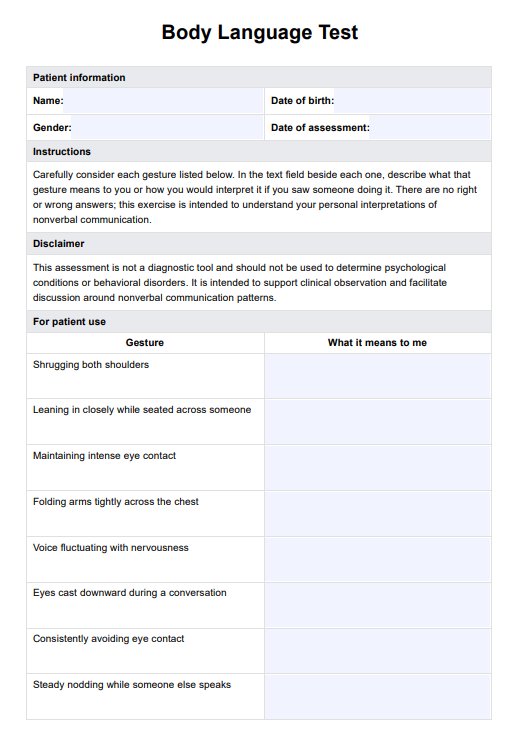A facial expression test can reveal nuanced emotions by analyzing micro-expressions and other subtle facial movements. For example, genuine smiles involve the mouth and eyes, often characterized by crow's feet or raised eyebrows. Such tests can help identify emotions like happiness, sadness, anger, fear, surprise, contempt, and disgust, which are critical for understanding non-verbal communication.

Body Language Test
Take our Body Language Test to improve your understanding of non-verbal cues, enhance communication skills, and interpret emotions accurately.
Body Language Test Template
Commonly asked questions
Leaders use expansive body movements and hand gestures to emphasize points and engage with their audience. These gestures can convey confidence and help articulate complex ideas. By incorporating such movements into your speech, you can enhance the clarity of your message and make a more impactful connection with your listeners.
Micro-expressions are brief, involuntary facial expressions that reveal genuine emotions, often before a person can hide them. They are crucial in reading body language because they can provide insights into someone's genuine feelings, which might be concealed by controlled facial expressions or speech. These fleeting signs can indicate emotions like anger, fear, sadness, happiness, surprise, contempt, and disgust.
EHR and practice management software
Get started for free
*No credit card required
Free
$0/usd
Unlimited clients
Telehealth
1GB of storage
Client portal text
Automated billing and online payments











